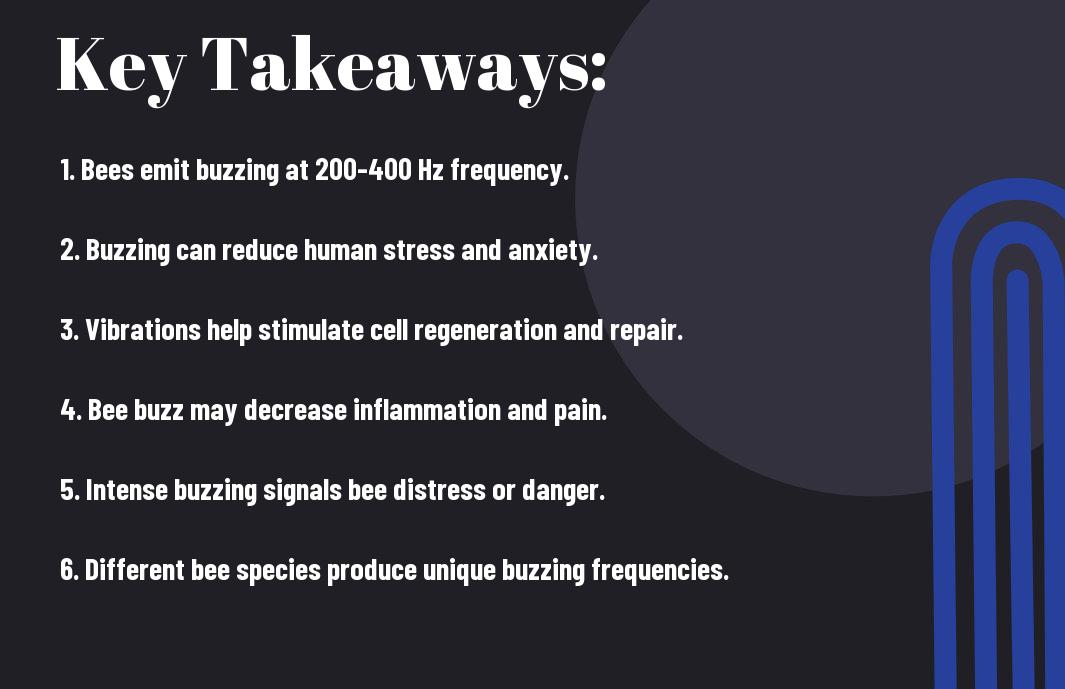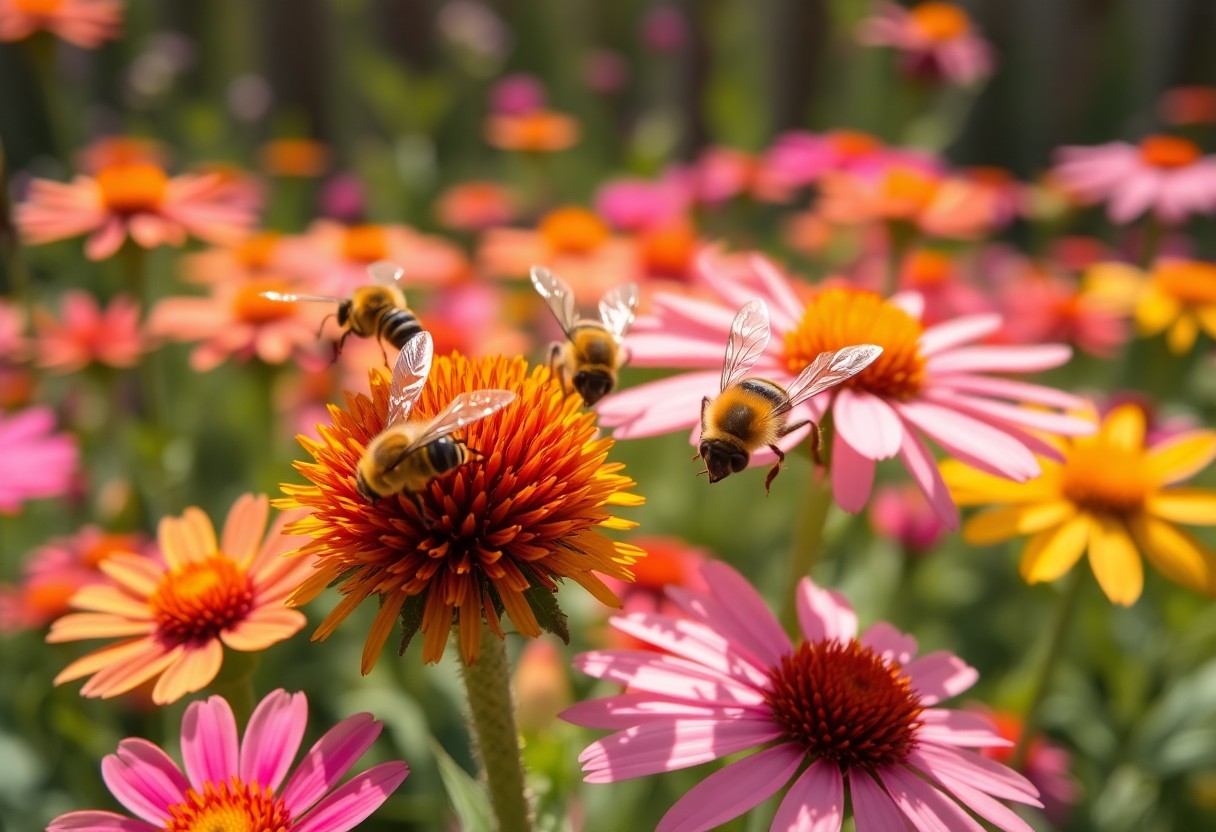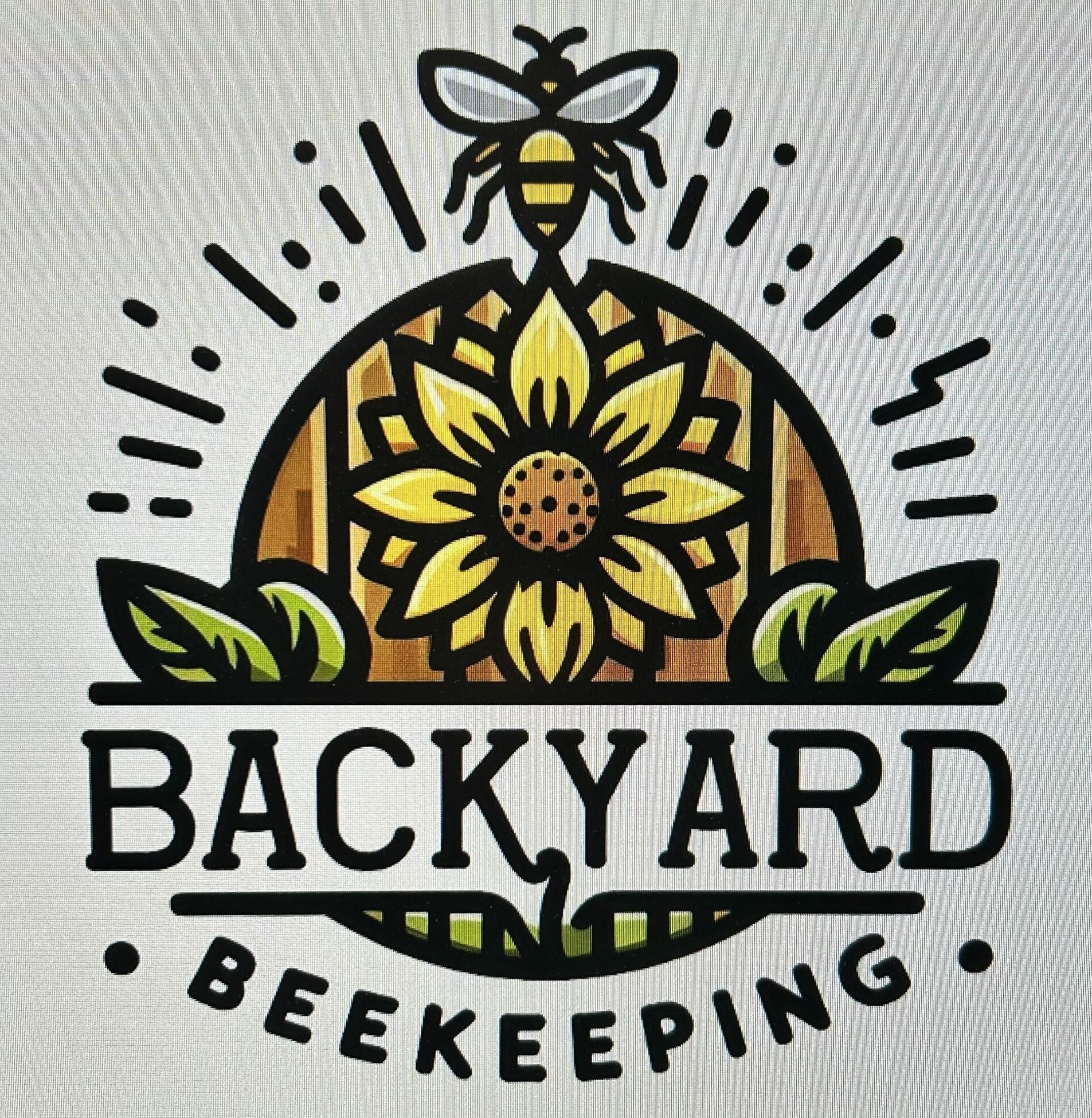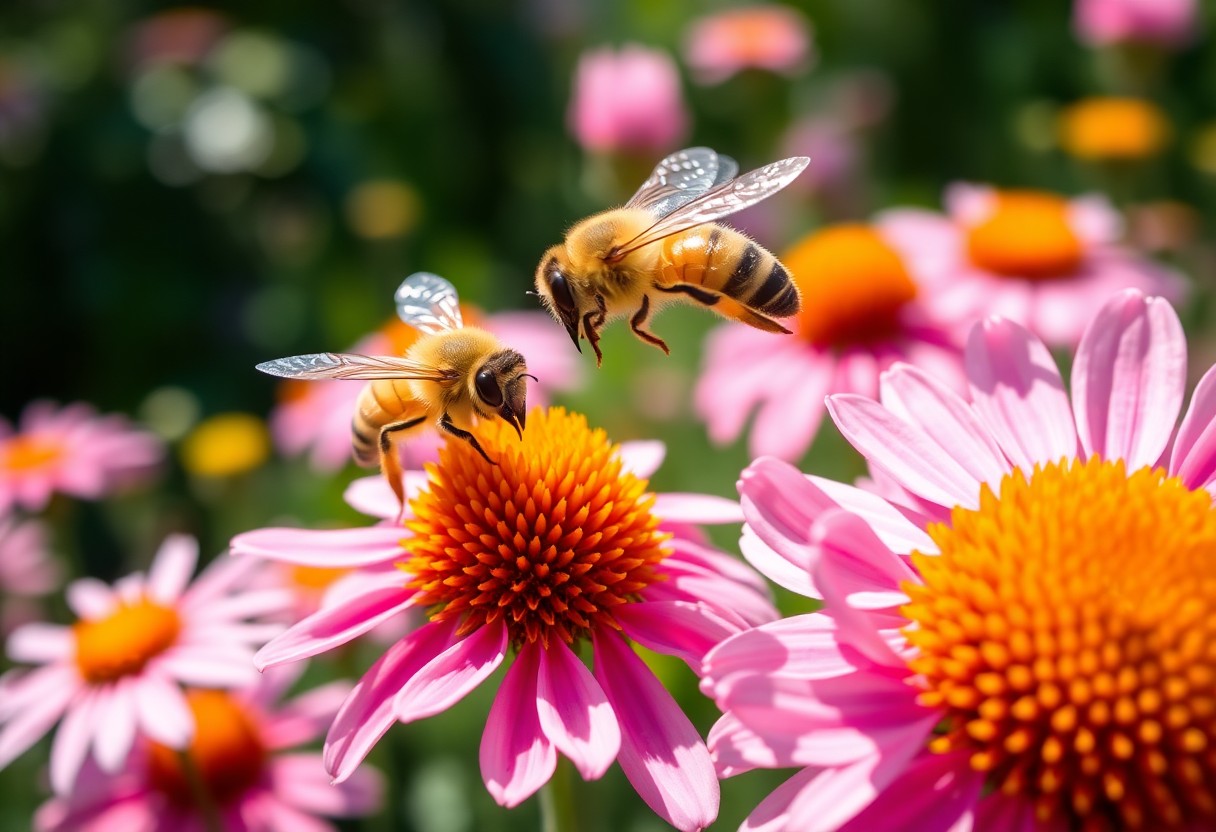You may have noticed the soothing hum of a buzzing beehive, but did you know this sound carries remarkable healing benefits? The vibrations created by bees not only produce a calming effect but also promote tissue repair and reduce inflammation in the human body. By tuning into these natural frequencies, you can experience stress relief and enhanced well-being. Exploring the science behind the bees’ harmonious buzz reveals how these tiny creatures contribute to both nature’s balance and your health in unexpected ways.
Key Takeaways:
- The buzzing of bees produces a harmonious frequency between 200 to 400 Hertz, which is within the range of human hearing and has therapeutic effects.
- Exposure to bee vibrations can reduce stress and anxiety by lowering cortisol levels, promoting relaxation and well-being.
- Bee buzz vibrations may stimulate the regeneration and repair of human cells and tissues, potentially aiding in inflammation reduction and pain relief.

The Science of Bee Buzzing
Before exploring the healing aspects of bee buzzing, it’s important to understand the science behind the sound itself. This foundation will help you appreciate not only how bees produce their distinctive buzz but also why its frequency is so uniquely positioned to interact with you on both a physical and emotional level.
Frequency of Bee Buzzing
An intriguing aspect of bee buzzing is its frequency, which typically ranges between 200 to 400 Hertz. This range comfortably falls within the audibility limits of the human ear, allowing you to hear and connect with the bees’ harmonious hum. For example, honeybees usually buzz between 250 and 300 Hz, while bumblebees produce lower frequencies around 200 to 250 Hz. These specific frequencies are more than just sound; they form a vibrational pattern that can have subtle yet meaningful effects on your nervous system.
When you listen closely to a beehive, the continuous buzz you hear is a collection of these frequencies blending into one soothing rhythm. Because this sound resonates within your hearing range, it can influence your brainwaves and promote relaxation. This is one reason why many people find the texture of bee buzzing calming and restorative, adding a fascinating layer to the interaction between you and the natural world.
The Mechanics of Sound Production
Below the surface of this calming buzz lies a complex process of sound production. Bees generate their characteristic hum primarily through the rapid movement of their wings. The wings flap at astonishing speeds, creating vibrations in the surrounding air that translate into the buzzing sound you hear. The precision and consistency of these wing beats are what allow bees to produce such a steady and harmonious frequency.
Besides wing movement, the bee’s thoracic muscles play a significant role. These muscles contract rhythmically but are not directly linked to wing motion, allowing the wings to vibrate independently. This unique mechanism enables bees to modulate their buzzing for different purposes, whether it’s signaling to fellow hive members or warning potential threats.
In addition, the structure of the bee’s exoskeleton aids in amplifying these vibrations. The body acts almost like a natural resonating chamber, enhancing the buzzing sound’s reach and clarity. This biological design ensures that the buzzing generated is not only effective for communication within the hive but also capable of producing the therapeutic vibrational frequencies that can positively impact you.
Healing Vibrational Energy
The Role of Frequency in Healing
There’s something truly remarkable about the specific frequency of a bee’s buzz, generally ranging between 200 to 400 Hertz. Healing often involves resonance, and this frequency falls within the range your body can respond to in a beneficial way. When exposed to these harmonious vibrations, your cells and tissues may begin to resonate in sync with the frequency, promoting a natural environment for healing and regeneration. This phenomenon is a key reason why the gentle hum of bees holds such therapeutic potential.
Healing through vibrational frequencies is an emerging field that links sound waves to cellular health. The buzzing you hear isn’t just noise—it is a form of energy that interacts with your biological systems. By tapping into this vibrational energy, you can experience enhanced tissue repair and possibly a reduction in inflammation, making the vibrations emitted by bees a fascinating avenue to explore in holistic and regenerative medicine.
Stress Reduction and Anxiety Relief
At the heart of the calming power of bee vibrations is their ability to reduce stress and anxiety. When you listen to the steady, soothing buzz of a beehive, you engage with a sound that helps ease your mind and body. This vibrational energy works much like a lullaby, creating a peaceful auditory environment that can decrease feelings of anxiety and promote relaxation.
Scientific studies support the idea that exposure to these harmonic frequencies leads to a notable decrease in stress markers. By incorporating the sound of bees or similar vibrational therapies into your routine, you may find a natural and effective way to calm your nervous system.
Understanding how bee vibrations reduce stress can change the way you approach emotional well-being. The subtle hum you might often overlook contains within it a therapeutic quality that can soothe your anxiety and promote a more balanced mental state.
Impact on Cortisol Levels
Energy emitted from bee vibrations has a measurable effect on the hormone cortisol, which is closely linked to your body’s stress response. Lowering cortisol levels can significantly improve how you feel, reducing tension and fostering a sense of calm. Listening to the buzzing frequencies of bees has been shown to help your body regulate this hormone more effectively.
These vibrations support your body’s natural mechanisms, helping to bring cortisol down and encouraging relaxation. When cortisol levels are balanced, your overall sense of well-being improves, which can positively influence sleep, mood, and your body’s ability to heal.
For instance, research indicates that regular exposure to bee buzz frequencies can lead to sustained reductions in cortisol, helping you maintain lower stress levels throughout your day. This effect not only aids relaxation but also supports long-term health by minimizing the wear and tear stress hormones can impose on your body.
Regeneration of Human Tissue
Many people are unaware that the gentle buzzing of bees holds remarkable potential for the regeneration of human tissue. This phenomenon is rooted in the emerging field of vibrational medicine, where specific frequencies are used to stimulate the body’s natural healing processes. By understanding how these vibrations work, you can appreciate the fascinating connection between bees and your body’s ability to repair itself.
Vibrational Medicine Explained
About vibrational medicine, it is a therapeutic approach that harnesses sound frequencies to promote health and healing. The specific frequency range produced by bees—approximately 200 to 400 Hertz—falls within a zone that your body’s cells can resonate with. This resonance is not merely a theoretical concept; it has practical implications, as exposure to these vibrations has been linked with lowered cortisol levels, contributing to stress relief and a more relaxed state that supports tissue repair.
When you expose your tissues to such harmonious buzzing, it stimulates cell activity and encourages the regeneration process. Research suggests that these gentle vibrations help your cells maintain optimal function by aligning their internal rhythms with the external frequency, thereby enhancing their ability to repair and regenerate damaged tissues.
Cellular Resonance with Bee Frequencies
The concept of cellular resonance involves your cells synchronizing their natural vibrations with an external frequency—such as the buzzing emitted by bees. This synchronization can create an environment in which cells function more efficiently, facilitating quicker repair and regeneration. When your cells resonate with these frequencies, it vitally supports the body’s intrinsic healing mechanisms.
Frequencies emitted by bees have been shown to have anti-inflammatory effects, which is an important factor in tissue regeneration. Reduced inflammation means less pain and swelling, allowing your body to focus its energy on rebuilding and restoring damaged areas. This harmony between cellular function and vibrational energy opens new pathways for potential therapeutic uses.
Applications in Regenerative Medicine
On the frontier of regenerative medicine, the healing buzz of bees is gaining attention as a complementary therapy. You can imagine how integrating these natural vibrations into treatment plans may enhance recovery times and improve outcomes, especially when dealing with injuries or chronic inflammatory conditions. Studies have indicated promising results, showing that exposure to these frequencies encourages tissue regrowth and supports pain reduction.
For you, this means that the humble bee’s buzz is more than just a soothing sound; it could be a non-invasive tool to aid physical healing. Exploring these applications further in clinical settings might offer new, holistic options for patients seeking alternatives to traditional medical treatments.
Applications of bee vibration therapy could extend beyond general wellness into specialized fields such as wound care and musculoskeletal rehabilitation. By combining bee buzzing frequencies with existing therapies, practitioners may uncover innovative methods to stimulate your body’s regenerative capabilities more effectively.
Bees as Communicators
Sound as a Communication Tool
On many occasions, you may have noticed the steady hum around a beehive, but this sound is far more than just background noise. Bees use their buzzing as an imperative mode of communication within their colony and with their environment. The harmonious buzz, typically in the range of 200 to 400 Hertz, acts as a language that conveys different messages depending on its frequency, intensity, and pattern. By adjusting their wing beats and the resulting vibrations, bees can signal everything from routine activity to urgent alerts.
When you observe how bees interact through sound, it becomes clear that the buzzing serves both practical and social functions. This vibratory language helps maintain the hive’s organization, encouraging collaboration and efficiency among the colony members. By tuning into these subtle sound cues, you can gain insight into the complex social behavior of these tiny yet remarkable creatures.
Warning Signals and Human Perception
Among the many ways bees communicate, their use of sound for issuing warnings is particularly fascinating. When a bee senses danger or perceives a threat near the hive, its buzzing intensifies and takes on a more agitated tone. If you are close enough, you can detect this shift in sound—a loud, urgent buzz that acts as a clear signal to both other bees and potential human intruders.
This heightened buzzing frequency is nature’s way of alerting all nearby creatures, including you, that caution is necessary. Your ability to hear this specific warning enables a unique form of cross-species communication. You become a recipient of the bee’s distress call, which encourages you to respect their space and avoid provoking an aggressive response.
And this communication is not just instinctual for bees; it also serves to protect the hive’s delicate balance. The warning buzz helps you understand when the bees’ natural defenses are engaged, allowing you to observe their world with greater awareness and respect.
The Language of Bees: Waggle Dance
To further appreciate how bees communicate, you can look at their famous waggle dance—a fascinating visual and vibrational method of conveying precise information. This dance involves a combination of wiggling motions and wing vibrations to share details about the location of food sources. When you witness a bee performing this ritual inside the hive, you are watching a sophisticated form of navigation and social interaction at work.
The waggle dance conveys imperative data such as the direction, distance, and quality of the food relative to the sun’s position. By interpreting these signals, you gain insight into how bees coordinate their foraging efforts efficiently, maximizing the colony’s resources. This incredible communication system demonstrates how vibrational energy and movement combine to form a complex language unique to bees.
Bees’ ability to transmit such detailed instructions through dance highlights their intelligence and social complexity. When you observe or learn about the waggle dance, you deepen your appreciation for the nuanced ways these tiny creatures cooperate and thrive within their community.
Interesting Facts About Bees
Buzzing Frequency Variations Among Species
Unlike many insects that produce a single typical sound, bees exhibit buzzing frequencies that vary significantly between species. Interesting to note, honeybees typically buzz at frequencies ranging from 250 to 300 Hertz, creating a harmonious sound that many find calming and even therapeutic. Bumblebees, on the other hand, often buzz at a slightly lower range of about 200 to 250 Hertz, offering a deeper buzzing tone that is distinctly different from that of honeybees.
These variations are more than just quaint differences in sound; they influence how you perceive and interact with each type of bee. The unique frequencies can also affect the way these bees communicate within their colonies and with you as an observer. By tuning into these buzzing sounds, you might gain a richer appreciation for the diversity and complexity of these remarkable pollinators.
The Role of Bees in Ecosystem Health
Beside their well-known role in pollination, which supports the growth of many fruits, vegetables, and nuts, bees contribute broadly to the balance and sustainability of ecosystems. When you observe bees at work, you’re witnessing a vital process that supports biodiversity by helping a wide range of plants reproduce. This, in turn, creates habitats and food sources for countless other organisms.
Bees’ pollination activities also influence the health of wild plants, enhancing soil stability and water retention in ecosystems. This makes them instrumental beyond agriculture, playing an necessary role in maintaining the natural environments you enjoy daily, whether in forests, meadows, or even urban green spaces.
Also, the decline or absence of bees could disrupt entire ecosystems, leading to reduced plant diversity and impaired food chains. Appreciating the wide-reaching effects of bees helps you understand why protecting their populations can be beneficial not only for nature but for your own well-being and that of future generations.
Bee Products and Their Health Benefits
About the products bees produce, such as honey, propolis, and royal jelly, each offers you impressive health benefits that extend beyond their delicious taste or nutritional value. Honey, for example, is known for its antibacterial properties and has been used traditionally to aid in wound healing. When you use these products, you’re tapping into natural remedies honed by nature’s own laborers.
Propolis and royal jelly are also recognized for their potential to support immune health and reduce inflammation. These substances are often included in holistic healthcare approaches and alternative medicine due to their therapeutic qualities that complement your body’s natural healing processes.
Their healing properties make bee products valuable additions to your health regimen, providing natural ways to promote wellness, reduce stress, and support recovery. By incorporating these into your lifestyle, you honor the remarkable power of bees and their contributions to human health.

The Cultural Significance of Bees
Bees in Folklore and Tradition
Among many cultures around the world, bees have long been symbols of diligence, community, and harmony. You’ll find that bees often appear in myths and legends as messengers or protectors, embodying qualities like wisdom and productivity. For example, ancient Egyptians revered bees as sacred creatures associated with royalty and divine power, while in some European traditions, bees were seen as guardians of the soul and the natural world.
You might also discover that bees are often woven into traditional practices and ceremonies. Their buzzing and collective work ethic inspire stories of cooperation and resilience, encouraging you to reflect on the interconnectedness of life. This rich cultural heritage highlights how humans have appreciated bees beyond their physical contributions, recognizing their symbolic importance across centuries.
Modern-Day Beekeeping Practices
Against the backdrop of growing environmental challenges, modern beekeeping practices have evolved with both science and sustainability in mind. When you explore contemporary methods, you’ll see beekeepers employing techniques that prioritize bee health and hive vitality, such as monitoring hive conditions with smart technology and using natural alternatives to pesticides. These efforts help maintain the balance between human influence and the bees’ well-being.
As you investigate into the world of modern apiculture, it’s clear that beekeepers strive to replicate natural conditions as closely as possible. Practices like regular hive inspections, controlled breeding, and providing diverse forage areas allow you to appreciate how these caretakers support bee populations in ways that honor their natural behaviors and ecological role.
At the heart of these practices is a growing awareness that your engagement with beekeeping not only sustains healthy bee colonies but also fosters larger ecological health. By adopting thoughtful approaches, you contribute to preserving these tiny healers whose harmonious buzzing carries healing vibrational frequencies that benefit both nature and yourself.
The Impact of Bees on Agriculture
Beekeeping plays an imperative role in agriculture by supporting the pollination of many crops that form a significant part of your daily diet. The buzzing bees you observe are not just producers of honey; they are also vital agents in the reproduction of fruits, vegetables, nuts, and seeds. Without their ongoing work, the quality and quantity of these foods would be significantly diminished.
You’ll find that the pollination service provided by bees translates into an abundance of nutritious produce for your table. Their presence elevates agricultural productivity, affecting the availability of many foods you rely on. This relationship demonstrates the practical and economic value that bees bring to farming and food production.
Impact from healthy bee populations extends beyond immediate crop yields. By promoting genetic diversity and sustainable ecosystems through efficient pollination, bees help maintain the resilience of the agricultural landscapes that support global food security and your personal well-being.
To wrap up
Now that you understand the unique vibrational frequency produced by buzzing bees, you can appreciate how their sounds go beyond mere background noise. The healing properties embedded in their harmonious buzz have been shown to help reduce stress, alleviate anxiety, and support tissue regeneration. By engaging with this natural phenomenon, you open yourself up to a subtle but powerful form of vibrational therapy that complements your overall well-being.
Your awareness of these beneficial vibrations encourages a deeper connection with the natural world and highlights the important role bees play not only in ecology but also in promoting human health. By tuning into the energy of buzzing bees, you gain access to a soothing experience that nurtures both your mind and body—an extraordinary example of nature’s quiet healing influence.
FAQ
Q: How does the buzzing frequency of bees contribute to healing?
A: The buzzing of bees produces a frequency typically between 200 and 400 Hertz, which falls within the range of human hearing. This specific vibrational frequency has therapeutic effects, such as reducing stress and anxiety by lowering cortisol levels. Additionally, these vibrations can stimulate cell regeneration and promote tissue healing by encouraging human cells to resonate harmoniously, aiding the body’s natural repair processes.
Q: Can exposure to bee vibrations help with pain and inflammation?
A: Yes, studies in vibrational medicine suggest that the gentle vibrational energy emitted by bees may help reduce inflammation and alleviate pain. The vibrations create an environment that supports healing, making them a potential natural therapy worth exploring in holistic healthcare and regenerative medicine.
Q: How do bees communicate warning signals through their buzzing?
A: Bees change the intensity and volume of their buzzing when they sense danger or feel threatened. This results in a sharper, more agitated buzzing sound that acts as a warning to nearby creatures, including humans. This form of communication allows bees to alert others within their colony and serves as a cross-species caution signal.

